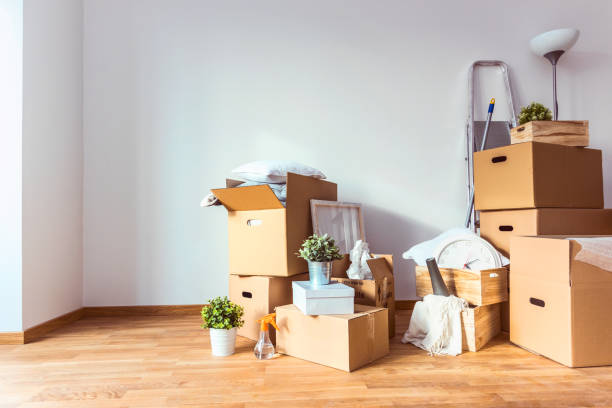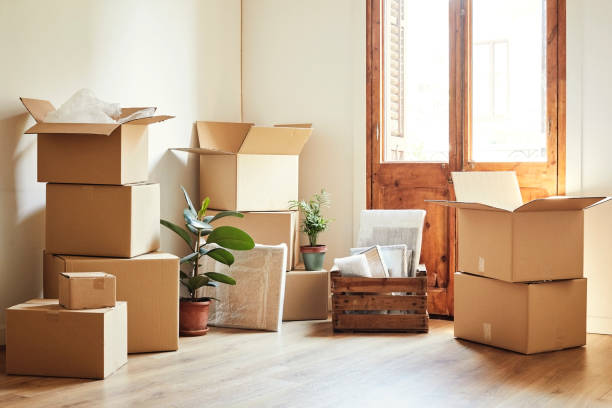Tips for Choosing the Best Moving Companies Germantown, MD for a Stress-Free Move

Planning a move can be overwhelming, but starting early is one of the most effective ways to minimize stress and stay organized. Giving yourself ample time allows you to prepare systematically, handle unexpected hurdles, and ensure nothing important gets overlooked. Here’s how beginning preparations early can set the stage for a seamless moving experience.
Advantages of Starting Early with Long Distance Movers in Germantown
- Compare moving companies or rental trucks based on reviews, pricing, and services.
- Evaluate routes and travel logistics, especially for long-distance moves.
- Determine the best time to move based on weather conditions or peak moving seasons.
- Booking moving services in advance often comes with discounted rates.
- Allows you to find affordable packing materials or borrow from friends instead of rushing for last-minute purchases.
- Avoids premium fees from movers due to short-notice requests.
- Spreading out tasks over days or weeks prevents burnout.
- Reduces decision fatigue by allowing you time for thoughtful planning.
- Provides breathing room if plans change suddenly.
- Gives you time to address unforeseen issues such as delays in lease agreements or utility setups.
Suggested Timeline for Your Move
| Weeks Before Moving Day | Key Tasks |
| 8-10 Weeks | Research movers/trucks, create a budget plan |
| 6-8 Weeks | Begin decluttering, start packing non-essentials |
| 4-6 Weeks | Notify landlord/providers, collect supplies |
| 2-4 Weeks | Pack systematically; confirm moving arrangements |
| Week of Move | Finalize packing; clean apartment; double-check plans |
Practical Steps to Start Early
- Create a Moving Checklist
A detailed checklist helps you keep track of tasks such as notifying utility providers, updating your address with key institutions, and scheduling cleaning services. - Establish a Budget
Calculate potential costs like mover fees, rental deposits at your new place, and temporary accommodations if needed. - Declutter in Advance
Start sorting through your belongings well before your move date:- Donate or sell items you don’t need.
- Recycle old documents and dispose of broken items responsibly.
- Label Essential Documents Early On Collect important personal documents (birth certificates, passports) in one folder so they’re easy to access when needed during the move.
Starting preparations weeks ahead ensures not only financial savings but also peace of mind as the big day approaches. By breaking tasks into manageable chunks over an extended period of time, you’ll prevent common pitfalls that come with last-minute planning while setting yourself up for success during this major life transition.
Tips for Choosing the Best Local Movers Germantown, MD for a Smooth and Stress-Free Move
When it comes to moving, starting early is one of the most effective ways to reduce stress and ensure a smooth transition. Proper planning and time management allow you to handle tasks methodically, avoid last-minute chaos, and address unexpected challenges with ease. Here is a step-by-step breakdown of how starting early can make your move more efficient.
Creating a Moving Timeline with Germantown Senior Movers
| Timeline | Task |
| 8-12 weeks before | Research moving companies or rental trucks |
| 6-8 weeks before | Begin decluttering your home |
| 4-6 weeks before | Gather packing supplies |
| 2-3 weeks before | Start packing non-essential items |
| 1 week before | Confirm logistics with movers or helpers |
| Moving day | Finalize any last-minute details |
Benefits of Starting Early
- Reduced Stress: By distributing tasks over several weeks, you can avoid feeling overwhelmed by last-minute responsibilities.
- Better Decision-Making: You’ll have more time to thoroughly research movers, compare quotes, and choose trusted professionals or reliable DIY options.
- Cost Savings: Booking services such as professional movers or truck rentals earlier can often help secure better rates.
- Opportunity for Decluttering: Early preparation gives you ample time to sort through belongings, donate unnecessary items, or hold a garage sale.
- Flexibility for Unplanned Events: Unexpected obstacles are easier to handle if you have additional time built into your moving schedule.
Essential Early Steps for Hiring Full Service Movers in Germantown
- Assess what items you intend to bring to your new space versus what can be discarded.
- Use this inventory as the basis for packing lists and labeling boxes.
- Compare professional moving services with DIY options (like renting a truck).
- Read online reviews and seek recommendations from friends or family.
- Estimate all potential costs related to your move, including transportation fees, packing supplies, and costs associated with temporary storage if needed.
- Start collecting boxes in various sizes from local stores or purchase durable options online.
- Don’t forget essentials like packing tape, bubble wrap, markers for labeling boxes, furniture covers, and padding materials.
- Inform landlords about lease termination dates (if applicable).
- Arrange changes for utility services such as electricity and water.
Key Takeaways on Starting Early with House Movers in Germantown
Beginning your moving preparations well in advance offers significant benefits in terms of organization, peace of mind, and financial savings. By following an organized timeline and gradually tackling each task step-by-step—such as decluttering belongings or researching services—you ensure that moving day itself will be much smoother and less stressful.
Choosing the Best Moving Company in Germantown, MD: Professional Movers vs. DIY Moving
When planning a move, one of the most significant decisions to make is whether to hire professional movers or take the DIY route. Both options come with their own set of benefits and challenges. Let’s break them down to help you decide which approach suits your needs, budget, and timeline.
Benefits of Hiring Professional Movers
- Time-Saving: Professional movers handle packing, loading, transporting, and unloading with efficiency. Their experience allows them to complete tasks in a fraction of the time it might take DIY movers.
- Reduced Physical Strain: Heavy lifting can be physically demanding and potentially hazardous. Movers have the proper tools and training to handle even the heaviest furniture safely.
- Insurance Coverage: Reputable companies typically provide insurance options to cover any potential damages during transit.
- Specialized Equipment: From dollies to furniture padding, professionals use equipment designed specifically for moving needs.
- Stress-Free Process: Hiring experts lets you focus on other aspects of your move while they handle logistics.
When Professional Movers Might Be a Good Fit:
| Scenario | Reason |
| Long-distance moves | Experience navigating interstate regulations |
| Moving large or fragile items | Specialized equipment ensures their safety |
| Limited time before moving day | Professionals work quickly and efficiently |
Advantages of DIY Moving
- Cost Savings: Renting a truck or borrowing a vehicle is often cheaper than hiring movers.
- Flexible Schedule: You can work at your own pace without worrying about external timelines.
- Control Over Packing: Handling your belongings personally allows you to pack carefully without relying on third parties.
- Great for Small Moves: For studio apartments or single-room relocations, a DIY approach might be simpler and more practical.
Common Costs Associated with DIY Moving:
| Expense | Estimated Cost |
| Rental truck/van | $20-$100/day + mileage |
| Packing supplies | $50-$200 |
| Fuel | Varies by distance |
| Equipment rental (dollies) | $10-$20 |
Factors to Consider Before Deciding
- Hiring professionals may cost more upfront but could save on potential damages or delays.
- A DIY move can be economical if well-organized.
- For longer moves, professionals often streamline complex logistics like permits or long drives.
- Shorter distances may justify renting a truck yourself.
- Bulky furniture or delicate antiques are better handled by trained experts.
- Smaller loads may be manageable without assistance.
- If you’re juggling work or family obligations during your move, professionals can relieve stress by shouldering most tasks.
Making an Informed Choice
There’s no one-size-fits-all solution when it comes to moving. If cost is your primary concern and your move is straightforward, doing it yourself may be ideal. However, opting for experienced movers can simplify the process significantly if time constraints or challenging logistics are at play.
By weighing these pros and cons carefully against your personal circumstances, you’ll find the option that aligns best with your unique needs.

Tips for Organizing and Decluttering Before Hiring Office Movers in Germantown
Preparing for a move is the perfect opportunity to take inventory of your belongings and decide what you want to keep, donate, or discard. Organizing and decluttering before moving day not only saves time but also reduces costs if you’re hiring professional movers. Here’s a step-by-step guide to help you streamline the process.
Benefits of Decluttering Before a Move
- Save Time: Fewer items mean less time spent packing, loading, and unpacking.
- Lower Costs: Moving companies often charge based on the weight or volume of your belongings. Decluttering helps reduce this expense.
- Start Fresh in Your New Space: Moving into a new apartment with fewer unnecessary items creates a cleaner, more organized living environment.
Step-by-Step Process for Decluttering
- Start Early
Begin organizing and decluttering at least 4–6 weeks before your moving date. This will give you ample time to sort through your belongings without feeling overwhelmed. - Sort Items by Category
Use the Marie Kondo-inspired method by organizing by category rather than room: - Clothes
- Books and papers
- Kitchenware
- Sentimental items
- Create Three Piles
As you go through each category, create three distinct piles: - Keep: Items that serve a purpose or bring joy to your life.
- Donate/Sell: Items in good condition that you no longer use but could benefit someone else.
- Discard: Broken or unusable items that cannot be repaired or repurposed.
- Digitize Paperwork
For documents like receipts, old bills, or manuals, consider scanning them into digital copies to save space while still retaining access when needed. - Recycle electronics at certified e-waste facilities.
- Donate clothes, furniture, or household goods to local charities.
- Safely dispose of hazardous materials like paints or cleaning agents according to local regulations.
Tips for Staying Organized During This Process
- Use labeled bins or boxes for sorting items into categorized piles (e.g., “Donate,” “Recycle”). Avoid mixing categories once you’ve started.
- Tackle one area at a time instead of trying to declutter everything in one day.
- Have I used it in the past year?
- Would I buy this item again today?
Decluttering Checklist
| Category | Action Steps | Notes |
| Clothes | Donate unworn clothes | Seasonal clothes: pack carefully |
| Kitchenware | Discard damaged utensils | Donate duplicate items |
| Electronics | Test functionality | Backup data before disposal |
| Sentimental Items | Limit how much you keep | Frame key photos |
Taking the time to organize and declutter can transform what might feel like an overwhelming move into a manageable task with tangible benefits. A well-organized start sets the tone for an efficient transition into your new apartment while helping you reduce stress along the way.
Packing Supplies You Need When Working with Germantown Apartment Movers
Preparing for a move can be daunting, but having the right packing supplies will make the process far more manageable. Investing in high-quality materials and being organized will ensure your belongings stay protected and your moving day goes smoothly. Here’s a guide to the essential packing supplies you should gather before starting your move.
1. Boxes of Various Sizes
- Small Boxes: Ideal for heavy items like books, canned goods, or fragile objects.
- Medium Boxes: Versatile and perfect for most household items such as kitchenware, electronics, or decor.
- Large Boxes: Best suited for lightweight but bulky items like bedding, pillows, or clothing.
- Wardrobe boxes with hanging bars for clothing on hangers.
- Dish boxes with dividers to protect plates and glassware.
Source sturdy boxes from local stores, online retailers, or directly from moving companies.
2. Protective Materials
- Bubble Wrap: Perfect for protecting fragile items such as glassware and ceramics.
- Packing Paper: Ideal for wrapping delicate surfaces; an alternative to newspaper (which can leave ink stains).
- Foam Sheets or Peanuts: Useful for filling empty spaces in boxes to stabilize contents.
3. Heavy-Duty Packing Tape
Invest in strong packing tape to seal your boxes securely. Look for tape that offers durability and has a dispenser for easy application. Consider also purchasing masking tape or painter’s tape to label fragile items or designate which boxes should not stack.
4. Labels and Markers
- Brightly colored labels or stickers to categorize rooms (e.g., “Bedroom,” “Kitchen”).
- Permanent markers to write item descriptions directly on the box.
Pro tip: Number each box and keep an inventory list on paper or digitally to track your belongings.
5. Furniture Covers and Moving Blankets
- Plastic furniture covers designed specifically for sofas, mattresses, and chairs.
- Moving blankets that provide additional padding during transport.
Note: Many movers rent out reusable moving blankets if you prefer an eco-friendly option.
6. Tools for Disassembly
- Screwdrivers (flathead and Phillips head).
- Allen wrenches (commonly needed for flat-pack furniture).
Store screws, bolts, and small parts in labeled plastic bags so they don’t get lost during the move.
Supply Checklist Table
| Item | Purpose |
| Small Boxes | Heavy items like books |
| Medium Boxes | Kitchenware or miscellaneous items |
| Large Boxes | Lightweight bedding/pillows |
| Wardrobe Boxes | Hanging clothes |
| Bubble Wrap | Fragile items protection |
| Packing Paper | Wrapping delicate surfaces |
| Labels/Markers | Organization |
| Furniture Covers | Protect sofas/mattresses |
Being well-prepared with these essential packing supplies will save time on moving day while ensuring your valuables arrive at their destination safely. Start gathering materials early so that you have everything you need when it’s time to pack up your home efficiently.
How to Notify Important Parties Like Your Landlord and Utility Providers When Using Movers Near Me
Notifying key parties well in advance of your move is a critical step in the relocation process. It helps maintain transparency, ensures continuity of services, and avoids unexpected disruptions. Below is a breakdown of who you should notify, when to reach out, and how to streamline this process.
1. Informing Your Landlord
- Review Your Lease Agreement: Check notice requirements for ending your lease. Typically, landlords require 30-60 days’ notice.
- Draft a Written Notice: Write a professional notice letter that includes:
- Your name and address
- Date of notification
- Planned move-out date
- Request for return of the security deposit (if applicable)
- Schedule an Inspection: Coordinate with your landlord for a final walkthrough to address any damage concerns and ensure you meet their expectations.
Sample Lease Termination Letter
| Date | [Insert Date] |
| Tenant’s Name | [Your Full Name] |
| Address | [Current Address] |
| Move-Out Date | [Planned Move-Out Date] |
“Dear [Landlord’s Name],
I am writing to provide formal notice that I intend to vacate the premises listed above on or before my planned move-out date. I kindly request an inspection prior to departure and look forward to discussing the return of my security deposit.”
Sincerely,
[Your Full Name]”
2. Contacting Utility Providers
- List Current Services:
- Electricity
- Water/Sewer
- Gas
- Internet/Cable/Phone
- Provide Advance Notice: Notify providers at least two weeks prior to your move-out date.
- Transfer or Cancel Services:
- For transfers: Provide details about your new address and moving date.
- For cancellations: Schedule shut-off dates after confirming when you’ll no longer need service.
Sample Table for Tracking Utility Notifications
| Service Type | Provider Name | Account Number | Action Required | Notification Sent On |
| Electricity | [Provider A] | XXXXXXX | Transfer | [Insert Date] |
| Internet | [Provider B] | XXXXXXX | Cancel | [Insert Date] |
3. Updating Key Accounts and Subscriptions
- Postal Services: File a change-of-address request with the postal office.
- Update billing addresses with banks, credit card companies, and loan providers.
- Notify health, auto, renters/homeowners insurance carriers about your relocation.
- Update driver’s license/address with the DMV.
- Inform tax authorities as needed.
Proactive Communication Pays Off
Notifying important parties ahead of time ensures a seamless transition during your move. By coordinating dates carefully and maintaining detailed records, you can avoid unnecessary stress while leaving a positive impression with landlords, utility providers, and other essential contacts.

Efficient Unpacking Tips from Top Moving Companies Near Me
Moving into a new apartment can be both exciting and overwhelming. Once the heavy lifting is done, settling in and unpacking efficiently becomes the next step to making your new space feel like home. With a little planning and organization, this stage can be manageable and even enjoyable. Below are some practical tips to help you settle in faster.
1. Prioritize Essential Areas First
Start by focusing on the most important areas of your apartment. These spaces will allow you to function comfortably while continuing to unpack over time.
- Bedroom: Set up your bed with fresh linens so you have a comfortable place to rest after long hours of work.
- Bathroom: Unpack toiletries, towels, and other essentials first for easy access.
- Kitchen: Organize basic cooking utensils, plates, cups, and cleaning supplies to make meal preparation accessible.
2. Unpack Room by Room
Instead of opening all boxes at once, tackle one room at a time. This approach helps maintain focus and prevents unnecessary mess.
- Begin with high-use rooms like the kitchen or bathroom.
- Label boxes according to their corresponding rooms during packing to simplify this process.
- Use a checklist to track which rooms are completed.
3. Optimize Organization from the Start
Take the opportunity to establish an organized system as you unpack. Don’t just shove items into drawers or closets—plan their placement thoughtfully.
- Use storage solutions such as bins, drawer organizers, or shelving units for better space management.
- Declutter again if needed; unpack only what you truly need in your new home.
- Label storage containers so finding specific items later is hassle-free.
| Item Type | Suggested Storage Solution |
| Seasonal Clothing | Vacuum-sealed bags |
| Important Papers | File organizers |
| Small Appliances | Kitchen cabinets or pantry |
4. Tackle Utility Setup Early
- Confirm all connections were activated per pre-arrangement with providers.
- Test lighting fixtures and appliances on day one.
- Arrange furniture around power outlets if necessary for better efficiency.
5. Personalize Your Space
- Hang artwork or photos on walls using removable hooks if renting.
- Incorporate decor elements like rugs or cushions that reflect your style.
- Arrange plants or small decorative objects in key areas for added warmth.
6. Plan an Efficient Disposal Strategy
- Flatten cardboard boxes for recycling or reuse them for storage.
- Donate excess packing supplies like paper or foam peanuts if possible.
- Research local recycling programs that accept moving materials.
7. Create a Post-Move Checklist
- Update your address with banks, subscriptions, and government agencies (if not already done).
- Register with local services such as libraries or gyms in your area.
- Introduce yourself to neighbors—a friendly gesture that fosters community connection.
By following these tips step-by-step during the post-move process, you’ll create an organized living space while minimizing stress along the way.
Expert Tips for Choosing Moving Services Germantown, MD Before Your Big Move
Choosing the right apartment is one of the most critical steps before embarking on your moving journey. The space you select will impact your lifestyle, finances, and overall happiness for the foreseeable future. Here’s a comprehensive guide to help you find the perfect apartment before you start planning your move.
Finding Affordable Moving Services Near Me
- What is my monthly income after taxes?
- How much am I willing to allocate toward rent (ideally 30% or less of your income)?
- Have I considered other costs such as utilities, internet, parking fees, and renter’s insurance?
Use this sample budget breakdown to guide your decision:
| Expense Category | Suggested Allocation (% of Income) | Example for $4,000 Monthly Income | |——————–|————————————|———————————–| | Rent | 25–30% | $1,000–$1,200 | | Utilities/Internet| 5–10% | $200–$400 | | Miscellaneous | 10% | $400 |
Finding Reliable Moving Labor Services Near Me
- Location: Do you want to be close to work, schools, or public transportation? Is proximity to shopping areas or parks important?
- Size and Layout: How many bedrooms and bathrooms do you need? Do you require extra space for an office or storage?
- Amenities: Are features like in-unit laundry, a gym, pet-friendly policies, or parking must-haves for you?
Sort these preferences into three categories: “Must-Have,” “Nice-to-Have,” and “Not Important” so that you’re prepared when comparing options.
Find Trusted Pack and Move Services Near Me for Your Neighborhood Relocation
- Use online tools like Google Maps or real estate platforms to explore neighborhoods virtually.
- Visit neighborhoods at different times of day if possible—morning traffic patterns and nighttime noise levels can vary greatly.
- Look at amenities nearby (grocery stores, hospitals) and check local crime rates using public safety websites.
Begin Your Apartment Search
- Search Online: Websites like Zillow, Apartments.com, or Craigslist allow you to filter listings based on price range, size requirements, and amenities.
- Check Social Media Groups: Community forums or local Facebook groups often have apartment listings not found elsewhere.
- Hire a Realtor (Optional): If you’re overwhelmed by options or looking in competitive markets where vacancies fill quickly.
Things to Look for During Apartment Tours
- Condition of walls, floors, windows, and appliances.
- Presence of safety features like smoke detectors and secure locks.
- Availability of natural light versus reliance on artificial lighting.
- Check water pressure by turning on faucets where allowed during tours.
Additionally: – Ask about lease terms (month-to-month vs long-term). – Confirm pet policies if applicable.
Finalize the Decision Strategically
- Compare rental costs with competitors in similar areas within proximity range by seeing data transparency levels renters offer real-time adjustments dependability trends maintained around.
- Apartment Moving Guide: Easy Tips and Tricks with Moving Companies Germantown, MD
- Tips for Choosing the Best Moving Companies Germantown, MD for a Stress-Free Move
- Tips for Working with Local Movers Germantown, MD to Plan and Execute Your Moving Process
- Apartment Moving Guide: Tips from Top Moving Companies Germantown, MD
- The Complete Checklist for Moving Companies Germantown, MD: Helping You Relocate

